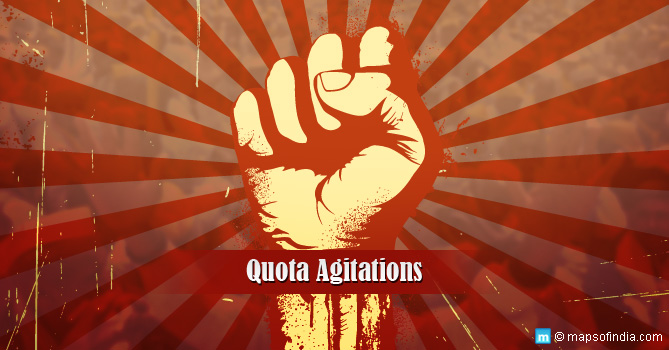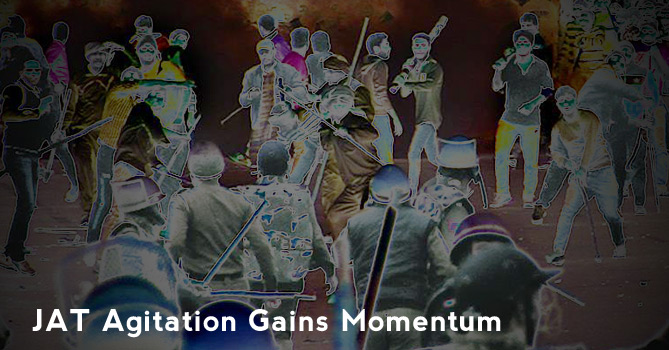Indian society has been sharply divided across caste lines since time immemorial. Historically, a number of castes in the country had remained deprived of adequate opportunities – in terms of education and employment – to bring about a change in the socio-economic conditions of these classes. Practices such as untouchability kept the Scheduled castes and Scheduled Tribes of the country from claiming the economic growth that was due to them. The history of reservation goes back to the British Raj in some parts of the country. In erstwhile Madras Presidency, for example, the British had come under extreme local pressure and instituted a form of quota as far back as 1830. By the early 1900s the princely state of Mysore too had some form of quota for Dalits in the region (in educational institutions).
Post independence, in the 1960s, the idea of quotas or reservation came up as a method of introducing affirmative action for the socially disadvantaged classes. Well before the days of the Mandal commission, the idea of providing these backward castes adequate representation in higher education institutions and government jobs was floated. On and off protests had been breaking out in various parts of the country without any conclusive action on the part of the government. Then came the Mandal Commission of 1979 which recommended 27 percent reservation quota for castes classified as Other Backward Class (OBC). Anti-reservation protests wrecked the country leading up to the self-immolation of a number of students as well. Here is a look at the top quota agitations over the past few years.
Jat Agitation of Haryana
The latest agitation and series of protests to be included in the “Backward Classes” ranks comes from the Jats, predominantly from Haryana. The state was on the boil while the police and administration grossly mishandled the situation. What resulted is that the reservation protests by Jats turned into violent mobs causing heavy damage to government and public property. The protests lasted through most of February 2016 and rioters caused damages estimated at about INR 340 billion (including INR 2 billion through affected rail routes). It was only after the Army was called in, that things began to settle down. The Jat agitation was among the worst in the country in the sense that the state almost shut shop for a prolonged period of time. Despite being a politically influential group, the Jats of the state have been demanding quota reservations for many years now and the decision is pending with the Supreme Court.
Kapu Agitation of Andhra Pradesh
At about the same time, in February 2016, the Kapu community of Tuni, a normally peaceful settlement in East Godavari district (Andhra Pradesh) broke out in violent protests demanding the inclusion of the Kapu community in the ‘backward castes’ list. Mudragada Padmanabham, leader of the Kapu Aikya Garjana, issued a call to block roadways and rail tracks on 31 January and within minutes massive crowds blocked the highways, disrupting traffic. The protesters set fire to rail coaches of Ratnachal express and attacked RPF personnel. The leader and his wife started to fast indefinitely and another man committed suicide. The Kapu community constitutes about 27 percent of the total population of Andhra Pradesh and Telangana put together. The TDP blames YSR Congress for the violence and destruction. Though peace was restored by the state’s Rapid Action Force but the matter is far from settled.
Patel Agitation of Gujarat
From June through August, mass protests were launched in the western state of Gujarat over reservation demands of the Patel community. Led by a commerce student Hardik Patel, thousands of young men and women in the state launched a violent agitation demanding quota reservations for the community. About 150 rallies were organized in most major cities such as Surat, Ahmedabad, Gandhinagar, Surendranagar, Ankleshwar, Junagadh, and Vadodara. Major clashes between police units and the agitators caused firing, tear gas shelling and such incidents which were widely reported in the news. Crores worth of private properties and public transport vehicles were torched. The protests ended only after the state government announced subsidies and scholarships for the Patel students of Gujarat. In January 2015, again the state witnessed a fresh round of protests, which triggered clashes with police units and about 11 protesters were killed in police firing.
Gujjar Agitation of Rajasthan
It was the turn of Rajasthan in May 2015 to witness widespread protests by the Gujjars. Starting from Bharatpur and Dausa, the protests spread across the state with thousands of Gujjars joining in and demanding a 5 percent reservation across all government jobs in Rajasthan. Apart from blocking the Jaipur-Agra national highway and major rail tracks in the state, protesters caused mass disruption in Rajasthan. The agitation was quelled only when the Rajasthan government promised to table a bill providing 5 percent reservation to Gujjars (as part of the Special Backward Classes).
Are Reservations Still Relevant?
Anti reservation protests are as old as quota reservation demands. But are reservations still relevant? Among the 80 or so classes in Haryana, only 16 have not been included in the OBC category. Such inclusion will guarantee the OBC access to reservation (or quota) in colleges and government jobs and all other affirmative action benefits. The Jats of Haryana, Patels of Gujarat etc are economically prosperous enough to be excluded from these classes but the quota reservation system requires a complete revaluation for it to remain relevant.
Explore More :
Reservation in India – Do we Still Need it
Jat Agitation Haunts Haryana
Kapus Protest in Andhra Pradesh
Patel community and the ‘Quota’ row
Reservations in India: Social Justice vs Meritocracy
Are we ignoring talent in the name of quota?
Why is violent behaviour increasing in society?
Problems faced by youth in India
5% Quota to Gujjars of Rajasthan
Democracy in India success or failure?





